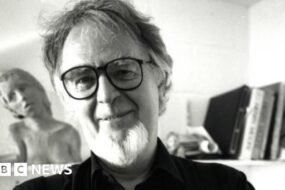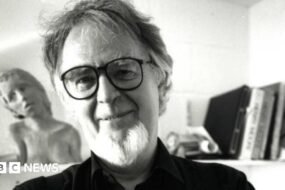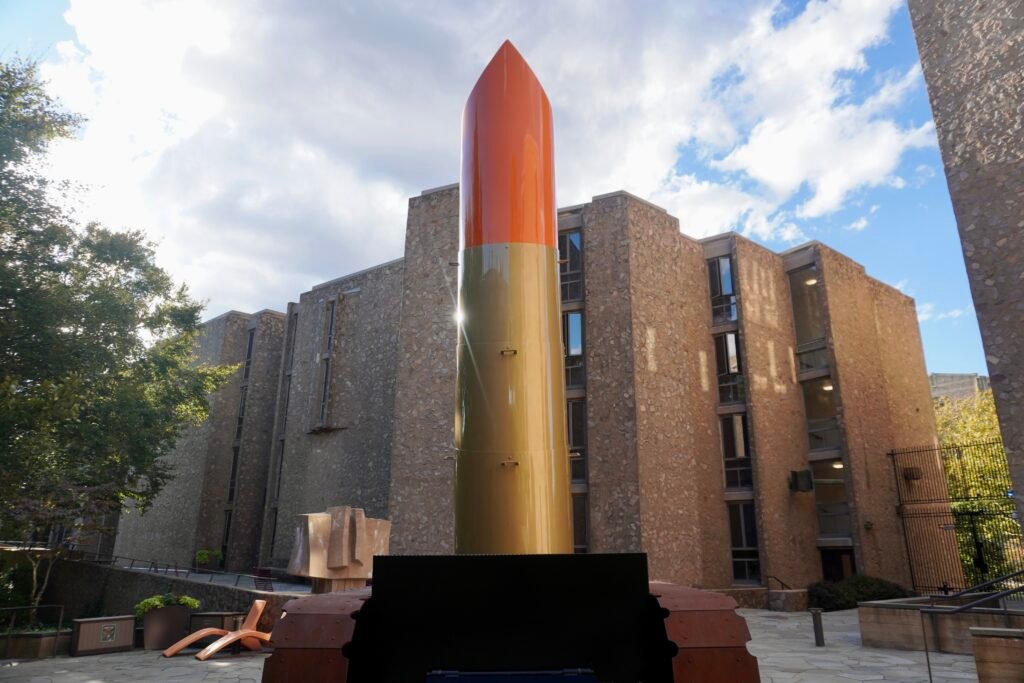
The iconic sculpture was returned to the Morse College courtyard last Wednesday following its removal in July for conservation efforts carried out by the Yale University Art Gallery.
Youssef Mazouz
Contributing Reporter
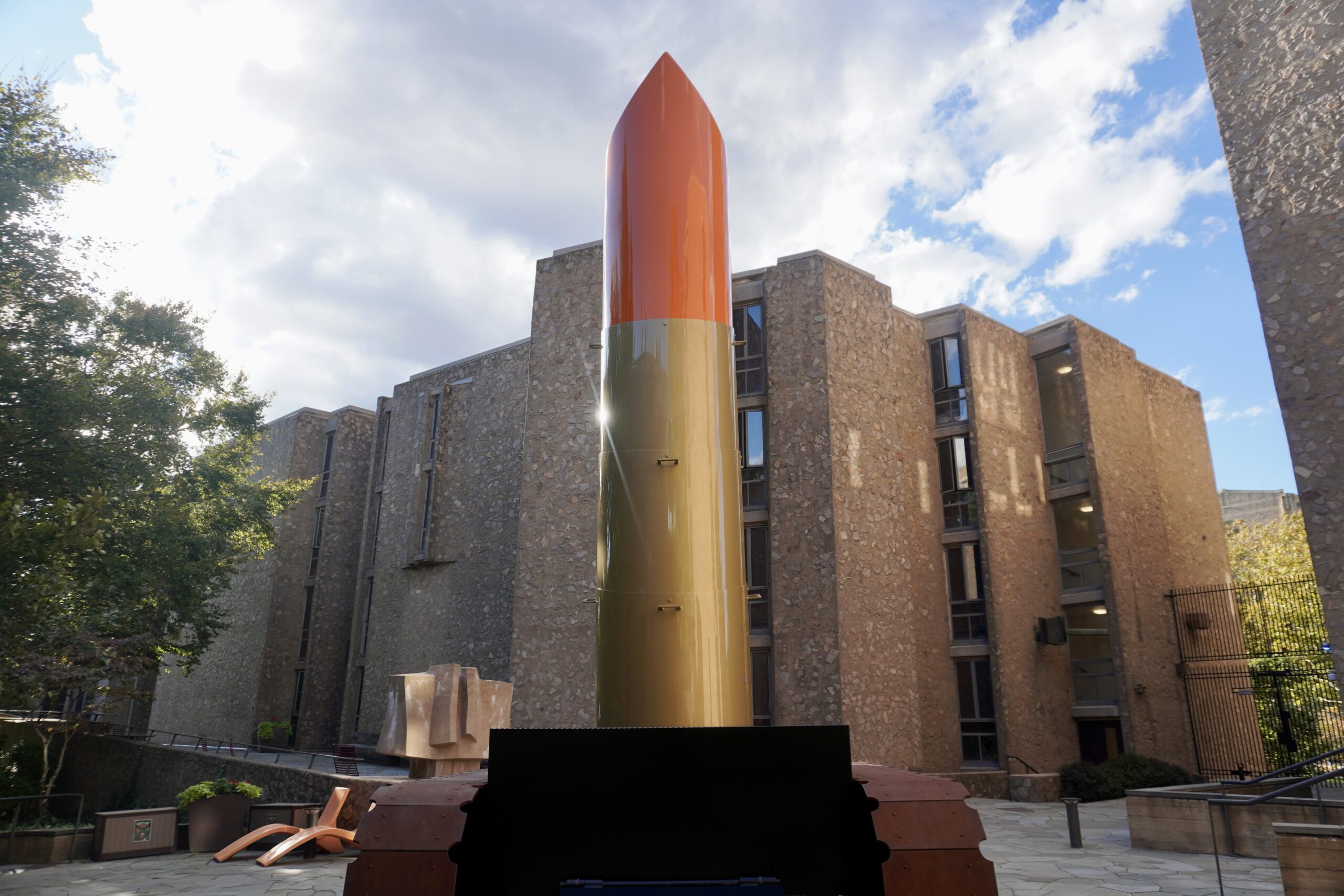
Patricia Hurtado de Mendoza, Contributing Photographer
The Morse College lipstick sculpture was returned to its usual spot in the courtyard last Wednesday, after being removed for three months.
The sculpture — “Lipstick (Ascending) on Caterpillar Tracks” by Claes Oldenburg ’50 — was constructed and originally placed on Beinecke Plaza in 1969. It was removed from Morse in July amid concerns about the degradation of the statue, as a result of its “continual exposure to the environment,” according to a press release from the Yale University Art Gallery.
According to the gallery, the conservation process necessitated the removal of the lipstick and required a sophisticated treatment plan involving removing the degraded paint from the statue and repainting necessary parts to match the original rendition of the sculpture.
Morse student Amy Boote ’28 said she thought “Lipstick” and its origins were mysterious to students outside of Morse. Boote said she was happy about the return of the lipstick and thought the process of returning the restored lipstick was “efficient.”
“As I recall, the gate out towards PWG was blocked for just one day, and it was cool to see them wheel in the parts on their sides,” she wrote to the News.
“By the next day, the lipstick was up and towering over the courtyard, eliciting questioning comments from students in other rescos about its meaning, symbolism, and general construction and purpose.”
The restoration was funded by Bank of America’s Art Conservation Project, the gallery’s press release said. According to a document on Bank of America’s website, the lipstick sculpture was one of 16 projects to receive the 2025 grant. Other projects were at the Sydney Opera House and Smithsonian National Portrait Gallery in Washington.
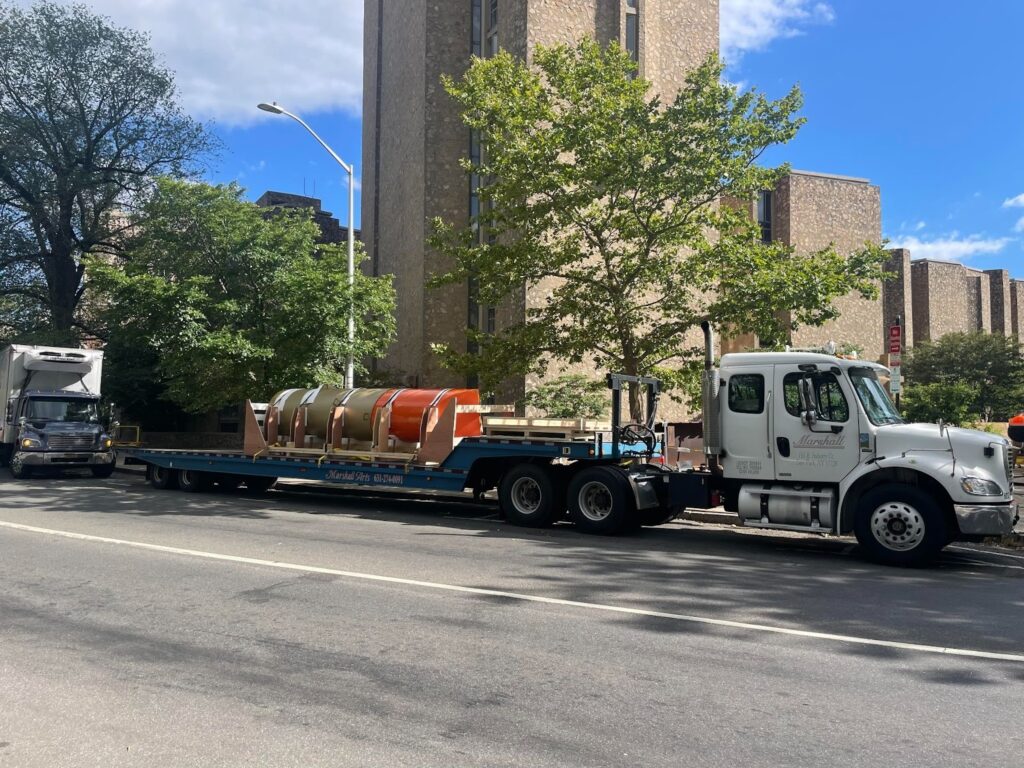

Asked about the lipstick sculpture’s return, Morse College Council Co-President Alastair Page ’28 wrote in a statement to the News: “Morsels love the Lipstick. And the Lipstick loves us.” He declined to comment further.
Morse Head of College Catherine Panter-Brick did not respond to the News’ request for comment.
Oldenburg gave the sculpture to Yale in 1969. Originally situated in the center of Beinecke Plaza, the sculpture was removed following an onslaught of vandalism and relocated to Morse College in 1974 following efforts by the YUAG and the History of Art Department.
According to a 2000 issue of the Yale Alumni Magazine and the recent gallery press release, the sculpture was meant as a gesture against the ongoing Vietnam War and rising American consumerism. The sculpture features a bright red-orange lipstick with a golden base stemming from a pair of tractor treads akin to those of a tank.
In an article published by The Architect’s Newspaper in 2022, Stuart Wrede ’65, an associate of Oldenburg who initiated the lipstick project with a group of art and architecture students in 1969, wrote that “not only did we want something that would subvert the stale classical environment of Beinecke Plaza as well as criticize what we saw as a conservative university, but we wanted an antiwar message given the ongoing war in Vietnam.”
The position of “Lipstick” as a central piece at the heart of Beinecke Plaza was important to Wrede, who wrote that after its move to Morse “it lost its charged context and critical intent.”
The sculpture is accessible through the Morse College entrance gate overlooking Payne Whitney Gymnasium.






